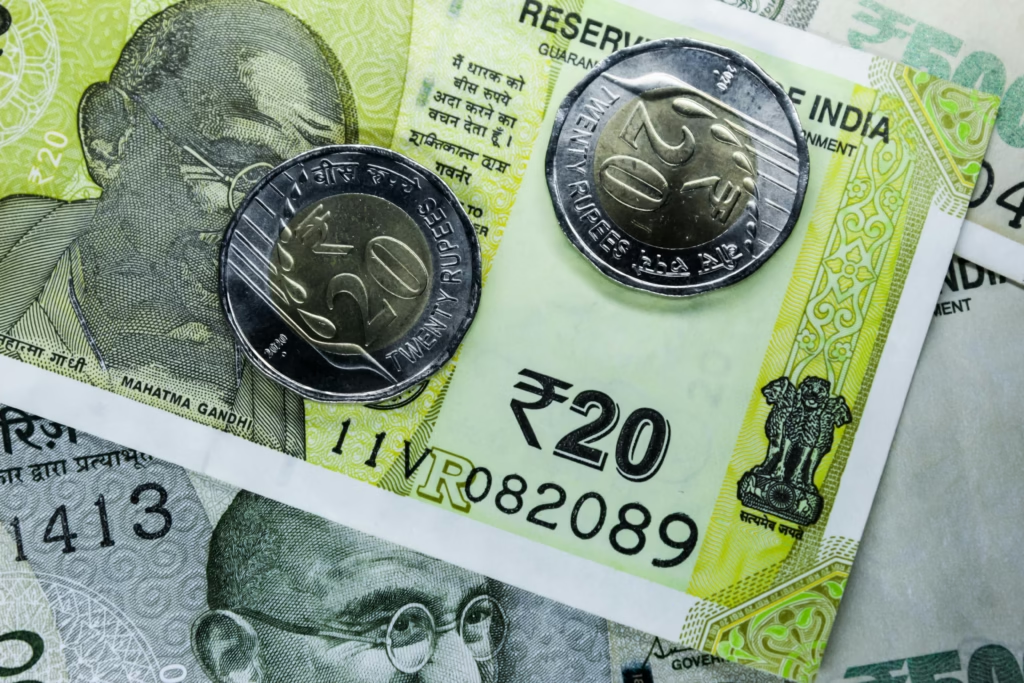Interim Budget Highlights 2024-25
On February 1, 2024, Finance Minister Nirmala Sitharaman presented the Interim Budget 2024-25, highlighting a significant transformation in the Indian economy under the Modi administration over the past decade.
She announced that the theme for this year’s Budget would be “Developed India Budget 2024”.
There is no changes in the direct and indirect taxation regimes.
Sitharaman emphasized the implementation of structural reforms and initiatives benefiting the people, while reaffirming the government’s commitment to fiscal consolidation. The target is to reduce the fiscal deficit to 4.5% by 2025-26.
The welfare and aspirations of the poor, women, youth, and farmers would be the primary focus areas in the Interim Budget 2024.
Additionally, she announced the intention to maintain the current tax rates for both direct and indirect taxes, including import duties, with no proposed changes in taxation.
Key Highlights of Budget 2024 – 25
Interim Budget 2024-25: Budget estimates
- Total receipts other than borrowings: Rs 30.90 lakh crore
- Total expenditure: Rs 47.66 lakh crore
- Tax receipts: 26.02 lakh crore
- Fiscal deficit: 5.1% of GDP
- Gross borrowing through dated securities: Rs 14.13 lakh crore
- Net borrowing through dated securities: Rs 11.75 lakh crore
Interim Budget 2024-25: Revised Budget Estimates 2023-24
- Total receipts other than borrowings: Rs 27.56 lakh crore, comprising tax receipts of Rs 23.24 lakh crore
- Total expenditure: Rs 44.90 lakh crore
- Revenue receipts: Rs 30.03 lakh crore
- Fiscal deficit: 5.8% of GDP
Interim Budget 2024-25: Roadmap for Viksit Bharat 2047
The ‘Amrit Kaal’ or ‘Viksit Bharat’ strategy, outlined by the government, encompasses a comprehensive set of initiatives aimed at fostering economic growth, sustainable development, and inclusive progress. Here are the highlighted points:
1. Economic Growth and Development:
- Adoption of policies to foster and sustain economic growth.
- Facilitation of inclusive and sustainable development.
- Boosting productivity and enhancing people’s capabilities.
- Creating opportunities and generating resources for investments in the country.
2. Reform, Perform, and Transform:
- Emphasis on the principle of ‘reform, perform, and transform’.
- Focus on next-generation reforms.
- Building consensus with states and stakeholders for effective implementation.
3. MSME Support and Regulatory Environment:
- Prioritization of timely and adequate finances.
- Providing relevant technologies and appropriate training for MSMEs to compete globally.
- Orienting the regulatory environment to facilitate growth.
4. Panchamrit Goals for Resource-Efficient Growth:
- Alignment of “Panchamrit” goals to facilitate resource-efficient economic growth.
- Focus on energy security, including availability, accessibility, and affordability.
5. Strengthening the Financial Sector:
- Plans to strengthen the financial sector in terms of size, capacity, skills, and regulatory framework.
- Aiming to meet the country’s investment needs through financial sector enhancements.
6. State Reforms Support:
- Recognition of the need for growth and development-enabling reforms at the state level.
- Proposal of a Rs 75,000 crore provision as a 50-year interest-free loan to support milestone-linked reforms by state governments.
7. High-Powered Committee for Population Growth:
- Formation of a high-powered committee to deliberate on the challenges of population growth and demographic changes.
- The committee will recommend comprehensive solutions to address these challenges and make the vision of ‘Viksit Bharat’ a reality.
Interim Budget 2024-25: ‘Garib Kalyan, Desh ka Kalyan’
The ‘Garib Kalyan, Desh ka Kalyan’ initiative highlights several government efforts aimed at alleviating poverty, providing financial assistance, and supporting the development of vulnerable groups. Here are some key points:
1. Multi-dimensional Poverty Reduction:
- Government assistance has benefitted 25 crore people, contributing to the reduction of multi-dimensional poverty over the past 10 years.
2. Direct Benefit Transfer (DBT) and PM-Jan Dhan Accounts:
- Utilization of PM-Jan Dhan accounts for Direct Benefit Transfer (DBT) amounting to Rs. 34 lakh crore.
- This approach has led to significant savings of Rs. 2.7 lakh crore for the Government.
3. PM-SVANidhi for Street Vendors:
- PM-SVANidhi initiative provided credit assistance to 78 lakh street vendors.
- Notably, 2.3 lakh street vendors have received credit for the third time, indicating sustained support.
4. PM-JANMAN Yojana for Vulnerable Tribal Groups:
- Introduction of PM-JANMAN Yojana aimed at aiding the development of particularly vulnerable tribal groups (PVTG).
5. PM-Vishwakarma Yojana for Artisans and Craftspeople:
- Implementation of PM-Vishwakarma Yojana to provide end-to-end support to artisans and craftspeople engaged in 18 trades.
- This initiative seeks to promote and empower individuals involved in traditional crafts and trades.
Interim Budget 2024-25: Welfare of ‘Annadata’
- PM-KISAN SAMMAN Yojana provided financial assistance to 11.8 crore farmers.
- Under PM Fasal BimaYojana, crop insurance is given to 4 crore farmers
- Electronic National Agriculture Market (e-NAM) integrated 1361 mandis, providing services to 1.8 crore farmers with trading volume of Rs. 3 lakh crore.
Interim Budget 2024-25: Momentum for Nari Shakti
- 30 crore Mudra Yojana loans given to women entrepreneurs.
- Female enrolment in higher education gone up by 28%.
- In STEM courses, girls and women constitute 43% of enrolment, one of the highest in the world.
- Over 70% houses under PM Awas Yojana given to women from rural areas.
Interim Budget 2024-25: Empowering Youth
The government’s efforts in empowering the youth are evident through various initiatives focused on skill development, entrepreneurship, and financial support. Here are key highlights:
1. Skill India Mission:
- Training of 1.4 crore youth under the Skill India Mission.
- This initiative aims to enhance the employability of the youth by providing them with the necessary skills for various industries.
2. PM Mudra Yojana:
- Sanctioning of 43 crore loans under the PM Mudra Yojana.
- The scheme focuses on fostering entrepreneurial aspirations among the youth by providing financial assistance for small and micro-businesses.
3. Financial Support for Tech-Savvy Youth:
- Allocation of a corpus of Rs.1 lakh crore to fund tech-savvy youth.
- Provision of a 50-year, interest-free loan at low or nil interest rates to support the financing and re-financing needs of youth involved in technology-driven endeavors.
Interim Budget 2024-25: Direct Tax
The Finance Minister’s proposals regarding direct taxes in the latest announcement include a combination of maintaining tax rates, improving taxpayer services, and addressing outstanding tax demands. Here are the key points:
1. Stable Tax Rates:
- The Finance Minister proposes to retain the same tax rates for direct taxes, providing stability and continuity for taxpayers.
2. Positive Growth in Direct Tax Collection:
- Over the last 10 years, direct tax collection has tripled.
- The number of return filers has increased to 2.4 times during this period, indicating a positive trend in compliance.
3. Improving Taxpayer Services:
- A commitment to enhance taxpayer services is mentioned, aiming to provide better support and assistance to taxpayers.
4. Withdrawal of Outstanding Direct Tax Demands:
- Outstanding direct tax demands up to Rs 25,000 pertaining to the period up to FY 2009-10 have been withdrawn.
- Outstanding direct tax demands up to Rs 10,000 for financial years 2010-11 to 2014-15 have also been withdrawn.
- This move is expected to benefit one crore taxpayers by reducing their financial burden.
5. Extension of Tax Benefits:
- Tax benefits for Start-Ups are extended.
- Investments made by Sovereign wealth funds or pension funds are also extended until 31.03.2025.
6. Extension of Tax Exemption for IFSC Units:
- Tax exemption on certain income of International Financial Services Centre (IFSC) units is extended by a year, now applicable until 31.03.2025 from the earlier deadline of 31.03.2024.
Interim Budget 2024-25: Direct Tax
- FM proposes to retain same tax rates for indirect taxes and import duties
- GST unified the highly fragmented indirect tax regime in India
- Average monthly gross GST collection doubled to Rs 1.66 lakh crore this year
- GST tax base has doubled
- State SGST revenue buoyancy (including compensation released to states) increased to 1.22 in post-GST period(2017-18 to 2022-23) from 0.72 in the pre-GST period (2012-13 to 2015-16)
- 94% of industry leaders view transition to GST as largely positive
- GST led to supply chain optimization
- GST reduced the compliance burden on trade and industry
- Lower logistics cost and taxes helped reduce prices of goods and services, benefiting the consumers
Sustainable Development/Green Energy
The Finance Minister’s proposals in the area of sustainable development and green energy underline the government’s commitment to environmental conservation and the transition to cleaner energy sources. Here are the key highlights:
- The commitment to achieve ‘Net Zero’ by 2070 under the Amrit Kaal, reflecting a long-term vision for sustainable development.
- Introduction of viability gap funding for harnessing offshore wind energy, with an initial capacity target of one gigawatt.
- Setting up coal gasification and liquefaction capacity of 100 million tonnes by the year 2030, signaling a move towards cleaner energy alternatives.
- Phased mandatory blending of Compressed Natural Gas (CNG), Piped Natural Gas (PNG), and compressed biogas for domestic purposes to promote cleaner fuel usage.
- Financial assistance for the procurement of biomass aggregation machinery, promoting the use of biomass for energy production.
- Implementation of rooftop solarisation, enabling one crore households to obtain up to 300 units of free electricity per month, promoting the use of solar energy.
- Plans to adopt electric buses for public transport and support the manufacturing and charging infrastructure for electric vehicles, contributing to the growth of the e-vehicle ecosystem.
- Launching a new scheme for biomanufacturing and bio-foundry to support environment-friendly alternatives, promoting sustainable practices.
- Installation of 1.3 crore LED street lights under the Street Lighting National Programme (SNLP) for energy efficiency.
- Introduction of the Blue Economy 2.0 scheme to restore and adapt coastal aquaculture and mariculture, emphasizing sustainable practices in coastal areas.
Interim Budget 2024-25: Infrastructure and Investment
The government’s focus on infrastructure and investment is evident from the various initiatives proposed to enhance connectivity, logistics efficiency, and urban development. Here are the key highlights:
- Implementation of three major railway corridor programmes:
- Energy, minerals, and cement corridor.
- Port connectivity corridor.
- High traffic density corridor.
- These corridors under the PM Gati Shakti initiative aim to improve logistics efficiency, reduce costs, and boost transportation of key commodities.
- Promotion of foreign investment through bilateral investment treaties, fostering a favorable environment for international investors.
- Expansion of existing airports and comprehensive development of new airports under the UDAN (Ude Desh ka Aam Nagrik) scheme.
- The UDAN scheme focuses on enhancing regional connectivity and making air travel more accessible.
- Urban transformation initiatives under the Metro rail projects and the NaMo Bharat projects.
- These projects aim to modernize urban infrastructure and enhance the quality of life in cities.
Interim Budget 2024-25: Inclusive Development
Healthcare Initiatives:
1. Cervical Cancer Vaccination:
Active encouragement for cervical cancer vaccination for girls aged between 9-14 years, indicating a focus on preventive healthcare for women.
2. Saksham Anganwadi and Poshan 2.0 Scheme:
- Implementation of the Saksham Anganwadi and Poshan 2.0 scheme to upgrade Anganwadi centers.
- This initiative aims to improve nutrition delivery and enhance early childhood care and development.
3. U-WIN Platform for Immunisation:
- Rollout of the U-WIN platform for the immunisation efforts of Mission Indradhanush, streamlining and enhancing vaccination programs.
4. Ayushman Bharat Scheme Extension:
- Extension of health coverage under the Ayushman Bharat scheme for all Accredited Social Health Activist (ASHA), Anganwadi workers, and helpers.
- This expansion ensures a broader reach of healthcare benefits to frontline workers.
5. Committee for Medical Colleges:
- Formation of a committee to study the issues faced in setting up more medical colleges in India, addressing gaps and challenges in medical education infrastructure.
Housing
1. Pradhan Mantri Awas Yojana (Grameen):
- The Pradhan Mantri Awas Yojana (Grameen) is close to achieving the target of 3 crore houses.
- An additional target of 2 crore houses has been set for the next 5 years, indicating a continued commitment to rural housing development.
2. Housing for the Middle Class Scheme:
- Launching a new scheme focused on housing for the middle class.
- The objective is to encourage the middle class to either purchase or build their own houses, promoting homeownership within this segment of the population.
Tourism
1. Development of Iconic Tourist Centres:
- Encouragement for states to undertake the development of iconic tourist centers.
- This initiative aims to attract business, promote opportunities for local entrepreneurship, and enhance the overall appeal of tourist destinations.
2. Long-term Interest-Free Loans to States:
- Provision of long-term interest-free loans to states to encourage tourism development.
- This financial support is likely to facilitate the implementation of projects aimed at enhancing tourism infrastructure and services.
3. Projects for Port Connectivity and Tourism Infrastructure in Islands:
- Undertaking projects for port connectivity, tourism infrastructure, and amenities in islands, including Lakshadweep.
- The focus on islands suggests an effort to promote tourism in unique and scenic locations, contributing to the overall growth of the tourism sector.
Interim Budget 2024-25: Agriculture and Food Processing
1. Pradhan Mantri Kisan Sampada Yojana:
- The Pradhan Mantri Kisan Sampada Yojana has benefited 38 lakh farmers.
- The initiative has not only supported farmers but has also generated employment opportunities, with 10 lakh people finding employment through this scheme.
2. Pradhan Mantri Formalisation of Micro Food Processing Enterprises Yojana:
- The Pradhan Mantri Formalisation of Micro Food Processing Enterprises Yojana has provided assistance to 2.4 lakh Self Help Groups (SHGs) and 60,000 individuals.
- The support includes credit linkages, helping micro food processing enterprises formalize and grow.
3. Integrated Aquaparks:
- Establishment of five integrated aquaparks, emphasizing the importance of modern and integrated infrastructure for aquaculture.
4. Atmanirbhar Oilseeds Abhiyan:
- Formulation of the Atmanirbhar Oilseeds Abhiyan strategy, with the goal of achieving self-reliance in oilseeds.
5. Comprehensive Programme for Dairy Development:
- Formulation of a comprehensive program for dairy development, indicating a holistic approach to promoting and enhancing the dairy sector.
Interim Budget 2024-25: Allocations for Various Ministries
|
No. |
Ministries |
INR in Lakh Crore |
|
1 |
Ministry of Defence |
6.2 |
|
2 |
Ministry of Road Transport and Highways |
2.78 |
|
3 |
Ministry of Railways |
2.55 |
|
4 |
Ministry of Consumer Affairs, Food and Public Distribution |
2.13 |
|
5 |
Ministry of Home Affairs | 2.03 |
| 6 | Ministry of Rural Development |
1.77 |
|
7 |
Ministry of Chemical and Fertilizers | 1.68 |
|
8 |
Ministry of Communication |
1.37 |
| 9 | Ministry of Agriculture and Farmer’s Welfare |
1.27 |
Interim Budget 2024-25: Allocations for Major Schemes
|
No. |
Schemes |
INR |
|
1 |
Mahatma Gandhi National Rural Employment Guarntee Scheme | 86,000 crores |
| 2 | Ayushman Bharat-PMJAY |
Rs.7,500 crore |
|
3 |
Production Linked Incentive Scheme | Rs.6,200 crore |
| 4 | Modified Programme for Development of Semiconductors and display manufacturing ecosystem |
Rs.6,903 crore |
|
5 |
Solar Power (Grid) | Rs.8,500 crore |
| 6 | National Green Hydrogen Mission |
Rs.600 crore |
Thanks
Never Stop Learning!











